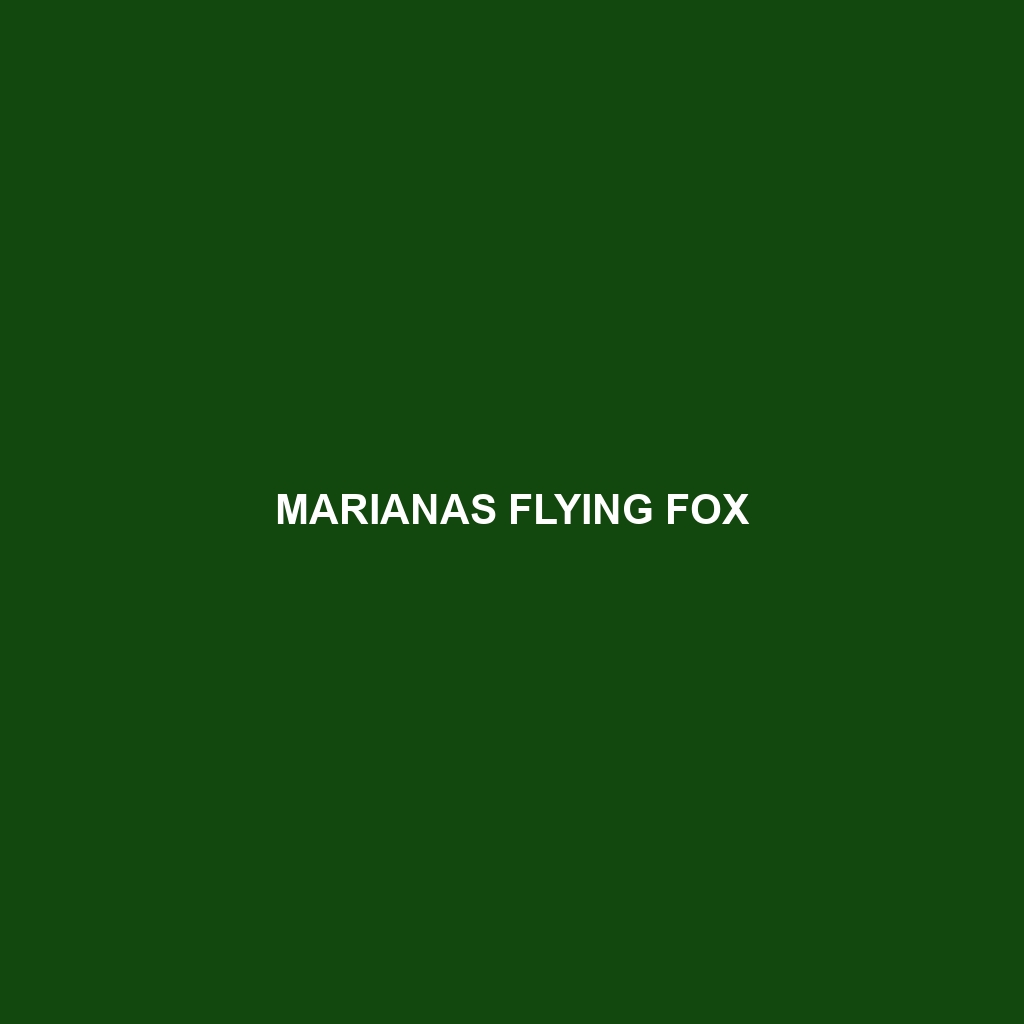Common Name: Marianas Flying Fox
Scientific Name: Pteropus mariannus
Habitat:
The Marianas Flying Fox is predominantly found in the Mariana Islands, which include Guam, the Northern Mariana Islands, and several smaller islands. This species largely inhabits tropical forests, thriving in areas with abundant fruiting trees, primarily in lowland forests. Their habitat is often characterized by lush vegetation providing shelter and food sources necessary for their survival.
Physical Characteristics:
Adult Marianas Flying Foxes are relatively large bats, with a wingspan reaching up to 1.2 meters (4 feet). They have a distinctive brown or black fur coat with yellow or orange fur around their necks, enhancing their visual appeal. Their large eyes and pointed snouts are adapted for a nocturnal lifestyle, while their large eyes provide excellent night vision. The combination of their size and unique coloration makes them easily recognizable in their natural habitat.
Behavior:
Marianas Flying Foxes are primarily nocturnal, foraging for food and socializing during the night. They are known to roost in large colonies, which can consist of hundreds of individuals, and exhibit social behaviors including grooming and vocalizations. These bats are also important for their ability to pollinate flowers and disperse seeds, playing a vital role in maintaining their ecosystem.
Diet:
The diet of the Marianas Flying Fox consists mainly of fruits, nectar, and flowers. They preferentially feed on native fruit trees in the Mariana Islands, such as papaya, bananas, and figs. Their feeding habits make them key players in seed dispersal, which contributes to the growth of various plant species and overall forest health.
Reproduction:
Breeding typically occurs during the warmer months, with a peak in breeding seasons observed between April and September. After a gestation period of about four months, females give birth to a single pup, which they care for closely until it is able to fly. Parental care is significant during the early stages of life, ensuring the survival and well-being of the offspring.
Conservation Status:
The Marianas Flying Fox is currently listed as vulnerable by the International Union for Conservation of Nature (IUCN). Factors contributing to their vulnerable status include habitat destruction, hunting, and climate change impacting their food sources. Conservation efforts are crucial to protect this unique species and its habitat.
Interesting Facts:
One of the most fascinating aspects of the Marianas Flying Fox is its social structure. They are known to communicate through various vocalizations, which include chirps and squawks. Additionally, these bats are often referred to as the “fruit bats” due to their diet, highlighting their significant role in their ecosystem as pollinators and seed dispersers.
Role in Ecosystem:
The Marianas Flying Fox plays a crucial role in maintaining the ecological balance of their native habitat. As frugivores, they help in pollinating plants and dispersing seeds through their feces, facilitating forest regeneration. Their activities support biodiversity and are essential for the health of the tropical forests they inhabit, making them an integral part of their ecosystem.
